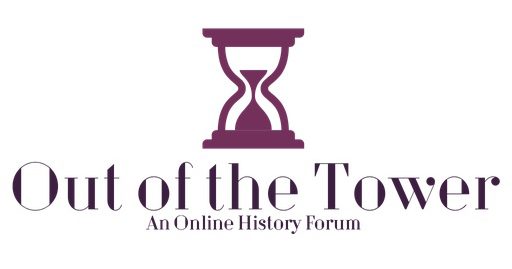In the episodes leading up to the Mad Men series finale, the show’s foremost character, the ever charismatic and manipulative Don Draper, who also happens to be the embodiment of the mid-twentieth-century advertising man, had been on a whirlwind Jack Kerouac-esque trip across America. Throughout this trip, we watched Don shed his personal possessions: for instance, he gave his car to a rookie con artist and his former wife’s wedding ring to his pseudo niece Stephanie. By the end, all he had was a tattered envelop full of money. By this time, Don had also found himself at a Esalen-like retreat facility in California where he experienced what appeared to be an emotional breakthrough.
American History
THE PAST IS NOT DEAD: The Baltimore Riots and Race in America
Rioting is a central part of America’s political tradition. As historian Heather Cox Richardson describes it, “If there is one constant in American history it is rioting.” A prime example of such rioting is the Boston Tea Party of 1773. During this famous incident disgruntled American colonists, disguised as Native Americans, boarded three ships and dumped 90,000 pounds of tea overboard. Today, the valuable cargoes of tea would have been worth about $1.7 million; yet, Americans have often looked back upon this episode of vandalism with a sense of pride.[1]
The Nature of Historical Work and the Art of Teaching History: A Look at the Recent Changes to the AP U.S. History Exam and Framework
I. AP U.S. HISTORY PAST AND PRESENT
Approximately 500,000 students take the AP U.S. History (or APUSH) exam each year.[1] The purpose of the exam is to give high-school students who have displayed a sophisticated level of knowledge in the subject the opportunity to earn college credit. For many years, however, teachers of APUSH complained about the wide-open style of the exam and the course’s framework. According to Trevor Packer, head of the College Board’s Advanced Placement Program, many teachers found it hard to resist the temptation of filling students’ head with every stray fact out of fear that it would be on the test. In response, Packer decided to initiate a review process of the exam and course guidelines with what he described as “an incredibly expensive and exhaustive effort that any business analyst would have deemed insane given the steady, healthy annual growth in AP participation.”[2]
Divided, Middle, and Native Grounds: The Redskins Controversy and its Historical Implications
By Terumi Rafferty-Osaki and Rebecca DeWolf, Ph.D.
On September 25, 2014 of the The Daily Show with Jon Stewart, beat reporter Jason Jones interviewed fans of the Washington Redskins on one panel and a group of Native American activists on another. During the last few moments, Jones brought both panels together to create more of a dialogue. Long-time fan Maurice Hawkins, however, protested the move; he argued that he would not have worn his Redskins jacket had he known about the upcoming encounter.[1] This segment also came on the heals of the South Park episode, “Go Fund Yourself,” a satire that questioned the use of the Redskins name to promote a new start up company. During the episode, creators Trey Parker and Matt Stone made light of the fact that the US Patent and Trademark Office canceled the Washington Redskins’ trademark registration this past June. These are only a few examples of the firestorm over the decades-long struggle to change the Redskins team name.
Historical Perspectives on Burwell v. Hobby Lobby Stores, Inc.
In a recent American Historical Association (AHA) roundtable, historians Ruth Bloch, Naomi Lamoreaux, Alonzo Hamby, and John Fea offer insightful discussions on the historical implications of Burwell v. Hobby Lobby Stores.
Ruth Bloch and Naomi Lamoreaux retrace the history of the Supreme Court’s jurisprudence on corporate personhood to argue that Justice Samuel A. Alito’s opinion breaks with a long line of decisions that treated for-profit companies as “persons’ under the Constitution only for the purpose of protecting property rights-not the liberties-of individual members.”
As well, Alonzo Hamby discusses the relationship between Griswold v. Connecticut (1965) and Hobby Lobby. He contends that Hobby Lobby reflects a growing cultural conflict that will continue to divide American society well into the foreseeable future.
John Fea reminds us that corporate personhood has a long history; to this point, he notes that in post-Civil War America the Supreme Court on several occasions affirmed that corporations (primarily railroads) were covered under the Fourteenth Amendment. Yet, he also encourages us to further reflect upon the extent to which a for-profit company can posses a soul and practice a religious conscience. As he puts it, “Religious liberty was an inherently Protestant concept. It stemmed from the belief that people could read the Bible for themselves and draw their own religious conclusions. It has always been a religious idea applied to individual human beings.”
Hobby Lobby also touches upon some of the themes that I examine in my own research. As discussed in other posts, my Ph.D. dissertation looks at the competing civic ideologies embedded in the conflict over the Equal Rights Amendment (ERA) from 1920-1963. Throughout the original ERA conflict, ERA supporters documented the numerous times the Supreme Court had restricted women’s standing under the Fourteenth Amendment (Bradwell v. Illinois 1872; Minor v. Happersett 1874; Mackenzie v. Hare 1915; Goesaert v. Cleary 1947, etc.). Put simply, the Court maintained that the Fourteenth Amendment did not guarantee equal treatment before the law for men and women citizens. For ERA proponents, such rulings denied women their full standing as “persons under the law.” Moreover, amendment proponents insisted that the ERA would remedy this problem by affirming complete constitutional sexual equality and ensuring the full constitutional incorporation of women into the sovereign power of the people.
~Rebecca DeWolf, Ph.D.
